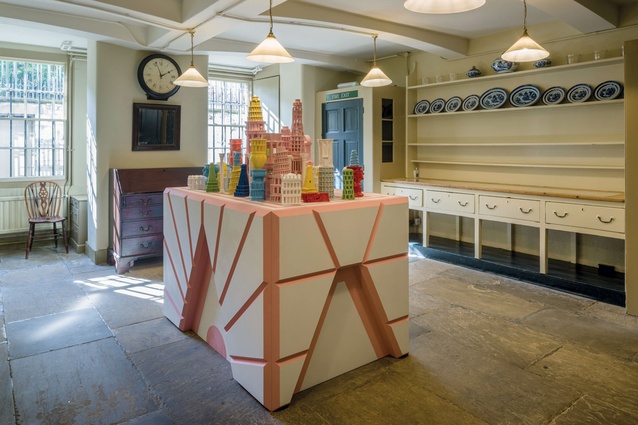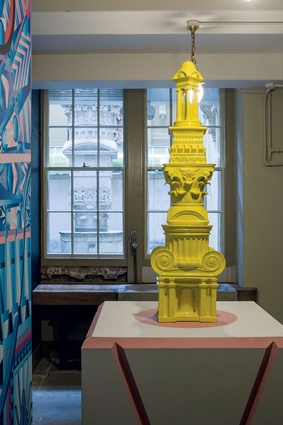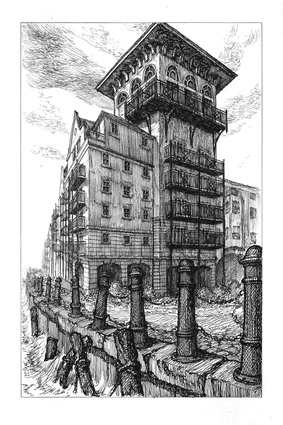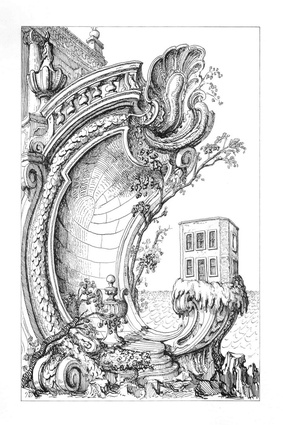Just what is it that makes yesterday’s architecture so different, so appealing?
Pseudo-Georgian buildings are the topic for two new exhibitions in London: one by the British-Argentinian artist Pablo Bronstein and the other by British designer Adam Nathaniel Furman, discussed here by Colin Martin.
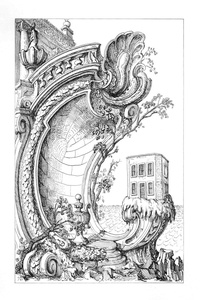
Paraphrasing the title of Richard Hamilton’s well-known pop-art collage (1956), we might ask: “Just what is it that makes yesterday’s architecture so different, so appealing?” Two architecturally qualified contemporary artists ponder this question in concurrent exhibitions in London.
At the Royal Institute of British Architects (RIBA), the British-Argentinian artist Pablo Bronstein presents Conservatism, or the Long Reign of Pseudo-Georgian Architecture, posing questions around classical architecture, pastiche and the ubiquity of 21st-century neo-Georgian style housing developments, constituting a contemporary British vernacular architecture that Bronstein terms ‘pseudo-Georgian’. At the Sir John Soane Museum, British designer Adam Nathaniel Furman exhibits his new work, The Roman Singularity.
Bronstein exhibits 50 new drawings showing his intricately observed elevations of pseudo-Georgian buildings, personally identified by scouring London streets. They were constructed since the 1970s. Their elevations may be inauthentic as facsimiles of 18th-century designs, but Bronstein is generous in acknowledging that they are no less sincere in their aspiration, if misguided in their execution.
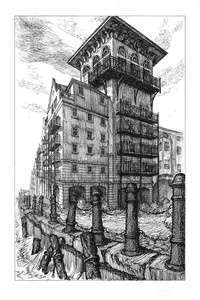
The smaller and humbler they are, the more extravagant are the cartouches he invents to frame them. Of a house drawn at 2 Lauriston Road and Well Street, E9, he writes: “This tiny little hovel has the most adorable canted corners due to its prominent position at the head of two roads in front of a roundabout… I have portrayed it in a suitably rustic setting.” Actually, he frames it within a magnificent cartouche, which evokes the exuberant carvings on Rome’s Trevi Fountain.
Bronstein juxtaposes his drawings with 14 examples of historic 18th-century Georgian or 20th-century neo-Georgian architectural elevations and other archival material that he selected from the institute’s collection. It is impossible to see behind Bronstein’s drawn façades but, in collaboration with architectural practice APPARATA, he reconfigured the gallery space as an interior of a pseudo-Georgian show home.
Instead of being shown around by a garrulous estate agent, Bronstein’s own extended captions provide wry commentary on architectural foibles encountered in moving between cramped rooms. Their dimensions aren’t equal to their architectural aspirations, particularly in the cases of a hexagonal room papered in yellow stripes and an octagonal room painted in aubergine.
All in all, great fun, and Bronstein is a forgiving observer. Of a block of flats at 428 Hackney Road, E2, he writes: “Formed like a pair of Georgian terraced houses, this medium-sized building combines all possible necessary accoutrements… into a perfect synthesis of aspiration and restraint. Even the central gel that joins the two parts of the prefabricated brick veneer cladding on the façade is used to witty effect, acting as a spurious separation between the two supposed houses. There is nothing more moving than to find brilliance in unexpected places.”
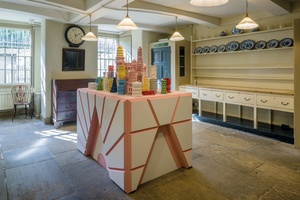
Unlike the RIBA gallery, the Soane museum is itself a bona fide Georgian domestic temple to the architect’s compulsive collecting. Here, Furman winds his architectural history clock further back, to republican Rome. For him, it is not simply the Eternal City, but “the spatial equivalent of the internet”, where past and present collide.
While resident artist at the British School in Rome during 2014/15, Furman undertook a two-fold exploration of the city. He unearthed stories and wrote others about the tapestry of architectural forms within Rome and architecture elsewhere inspired by the city, which he subsequently developed into digital architectural designs and scenarios.
Like Bronstein, he also explored the city’s architectural heritage extensively on foot and drew capriccios based on his experiences. Later, Furman used his digital and hand-drawn architectural ‘dalliances’ to create miniature buildings and architectural elements that encapsulate individual stories.
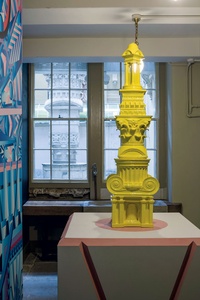
Fabricating these forms from clay, using a combination of 3D printing and handcrafting, he assembled an imaginary urban tableau of Rome, comprising multiple, differently coloured buildings and architectural fragments, titled The Roman Singularity. The work is a ceramic souvenir of Furman’s own 21st-century grand tour. Displayed in a former kitchen, on a plinth decorated with rusticated arches, it resonates with Soane’s own interest in Classicism.
In an adjacent room, two site-specific works link The Roman Singularity to Soane’s own accumulation of historically resonant architectural fragments, which he arranged in evocative displays throughout his Georgian terrace house. Combining traditional craft with new technology, Furman’s Pasteeshio remixes historical forms in a totemic 3D printed, glazed ceramic sculpture.
Multiple scales are collapsed together, with architectural fragments seemingly the size of buildings and buildings the size of models. His mural Capreeshio abstracts these forms into patterns. Positioned within sight of Soane’s Pasticcio, visible through a window, Furman’s contemporary works link Roman past and present, provoking an architectural dialogue based on forms, scales and materials.
Pablo Bronstein: Conservatism, or The Long Reign of Pseudo-Georgian Architecture, Architecture Gallery, RIBA, London, runs until 11 February 2018.
Adam Nathaniel Furman: The Roman Singularity, Sir John Soane Museum, London, runs until 10 December 2017.

